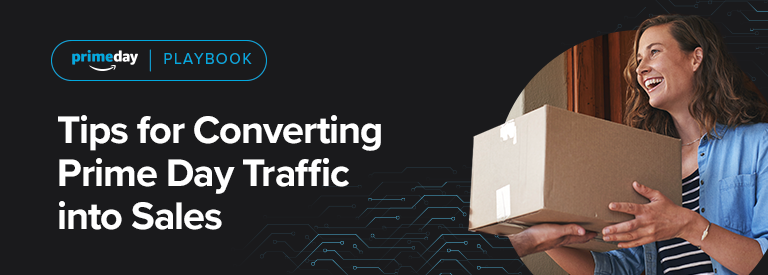Each year Prime Day serves up something different for brands to navigate. In 2020, pandemic conditions drove a significant increase in online shopping traffic, while supply chain issues hampered commerce. Fast forward to 2022, widespread inflation put a pinch on shoppers, brands and manufacturers as costs for goods and shipping spiked. Last year’s Prime Day was up against a greater number of competitive sales events – and this year is a mixed bag of increasingly cautious shoppers, rising seller fees and a number of established competing sales events.
Looking closer, we also see how inflation and unfavorable market conditions create significant pressure on the price-to-value ratio, promoting a noticeable trend of shoppers trading down to private labels. Tracking back to last year’s Prime Day and through the first half of 2024, purchase intent and traffic are up across the PriceSpider network, but purchase rates and average order value remain flat, with declines in select industries. This signals that shoppers are increasingly engaging with products online, but they are also spending more time researching for savvy buys. Finally, the increase in the number of sales events across Amazon and other marketplaces, like Walmart and Target, has taken away from the urgency and exclusivity that Prime Day once commanded.
On top of all this, brands are remiss not to consider that for years, roughly two-thirds of the Prime Day share of product sales are Amazon-owned products.
Against increasing competition, shifting consumer behavior and economic pressures, brands who want to take advantage of Prime Day have to start out with a clear look at the conditions and performance from previous years to determine how to make ad spend impactful, or risk a missed opportunity and low ROI. At PriceSpider, we have observed that 60% of brands that invest in Prime Day data analysis through tools like PriceSpider’s Where to Buy and Insights 360, among others, have improved their year-over-year performance by making better-informed product and marketing decisions and optimizing their channels.
To help brands improve their year-over-year Prime Day performance, our team at PriceSpider pulled together a Prime Day Playbook to ensure successful activations.
If brands decide to participate in Prime Day this year, our data has shown that a successful campaign requires a unified plan with a full-funnel strategy that optimizes for incremental results. At this stage in the game, brands should:
Get “retail ready”
Check for adequate stock of participating items. Ensure that there is high-quality content, including images or videos for any deals you plan to offer. Review product descriptions and pricing to check for consistency and make sure there isn’t any missing information. Remember, first you need to be findable during the frenzy, so considering your keyword mix and share of search both on and off Amazon has to be a consideration. Focus on discoverability and awareness tactics that increase organic and paid visibility on the digital search shelf, as well as impact eligibility on Amazon.
Make Some Noise
Drive social awareness in advance by leveraging customer-generated content, influencers and cross social platform engagement.
Prime Day Halo
Across all channels we see brands and shoppers increasing research and engagement, and courting early or post deals on the “shoulder” days around Prime Day–typically 2-3 days before and after. We call this the “halo.” Find ways to control and tailor the shopper journey through brand-owned channels and social media in the halo days surrounding Prime Day. Pre-Prime Day efforts can help build audiences for retargeting efforts post-Prime Day, and into the holiday shopping months to come. By creating a thread of consistency around your promoted items, shoppers will feel more comfortable converting overall, whenever it happens, whether on or off-site.
Play The Price is Right
One important value prop of tent pole events is their ability to drive incrementality through new-to-brand or new-to-category customers. By pricing effectively and factoring in long-term value considerations, this can lead to a longer tail campaign of bundling down the road of similar or complementary products. Create pricing incentives that get customers excited, as well as make your brand more “sticky.”
Prime Day drives extra traffic to the site, but it will be up to the brand to convert that traffic into sales as more shoppers scrutinize purchases in the face of more retailer options, like Walmart and Target. With major sales events running throughout the year, it’s become critical that brands create a smooth path to purchase without any friction in order to drive higher conversions.
For sellers to succeed on Prime Day, following these tips can eliminate the friction points that could deter a potential sale in the days leading up to Prime Day.

